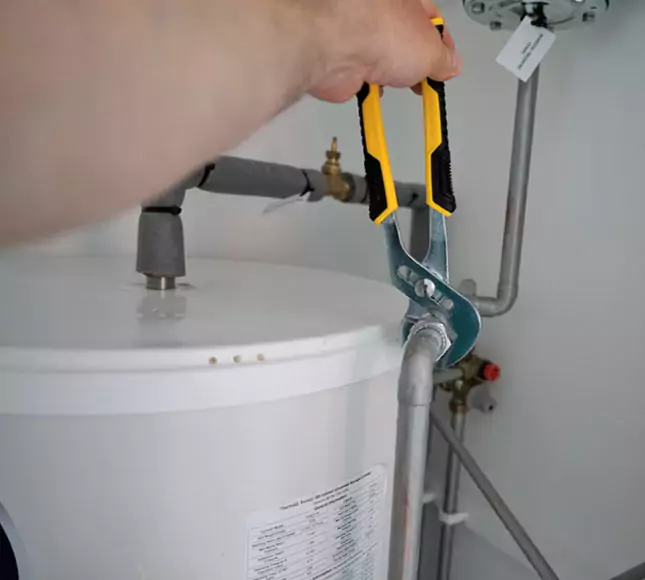Plumbing is any complex system that carries liquids for various uses to different locations. It is essential for all processes which involve carrying liquid from one location to another. In plumbing, pipes, plumbing fixtures, and other such apparatuses are used to transport liquids.

There are two types of plumbing systems- domestic and commercial. Domestic plumbing refers to the installation of water pipes in homes for bathing, drinking, washing, and cooking. Commercial plumbing on the other hand involves larger installations. The biggest difference between the two is in terms of the volume of liquid carried. Domestic plumbing usually has fewer connections and carries smaller volumes of liquid whereas commercial plumbing has many more outlets.
Before any plumbing project, there are several factors to be considered like- the type of plumbing involved, its intended usage, cost-effectiveness, safety features, etc. The most important aspect to be considered is the water supply that is needed by the household. This depends on whether it is a residential or a commercial establishment. Residential water supply involves the installation of gas supply and the installation of wastewater disposal devices like a septic tank.
Domestic plumbing normally includes two kinds of pipes- the main sewer line and the private septic tank. The purpose of both these plumbing systems is the same- delivering water to the home. But in the case of a private system, the household would need a septic tank for waste disposal. Moreover, the private system may have more connections than the main sewer line. To meet the requirements of large-scale commercial establishments, high-quality plumbing systems are installed.
The drain field is another part of the plumbing system. Drain field refers to the length of pipe from the drain pipe to the ground. This drain field is necessary to carry any solids that are generated during sewage cycling. A common problem in both the systems is the clogging of the drain fields with solid particles such as soap, hair, etc. Clogging of the drain fields may lead to heavy water flow and the accumulation of solid deposits in the pipes like lime deposits and black streaks in the toilets.
In case of a public plumbing system, the main drain and the out drain connects to the street. These pipes are often placed below the surface and connected to an overhead pipe system. For houses that do not have a basement, vertical plumbing system is used. Vertical plumbing system involves installation of pipe beneath the surface and using flexible corrugated pipes which are connected to an outside pipe system. In this system, the plumber places pipe supports where the drain and the out drain will be joined.
Drain plumbing fixtures include faucets, toilets, lavatories, bath tubs, etc. Plumbing fixtures help you to maintain the proper functioning of your house drainage system. Some of the popular fixtures include bathroom sinks, bathroom showers, toilet, taps, bath tubs, laundry centres, washing stations, dishwashers, etc. Bathroom sinks help in preventing the build up of lime deposit in the bath tubs and help in minimizing the build up of scale on the walls of the bathrooms. Bathroom showers keep the water flowing and also reduce the risk of getting your hair wet.
Toilets, on the other hand, play an important role in plumbing systems. Toilets can be either attached to the floor or fitted on top of it. Under the kitchen sink, there are separate waste pipes and drains which are connected to the kitchen sinks. If you have a new home and are confused about the type of pipes to be laid for the plumbing fixtures then contact a good plumbing company that has the expertise to install all your plumbing systems. Your plumbing company can help you choose from different options depending on your home structure and other factors.